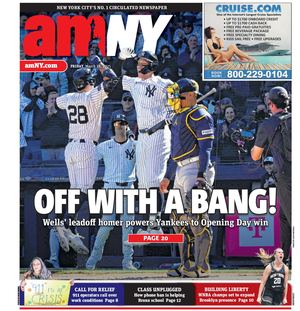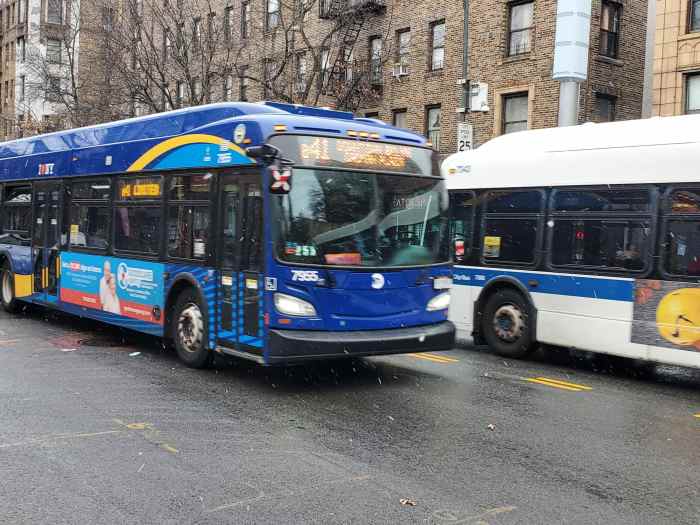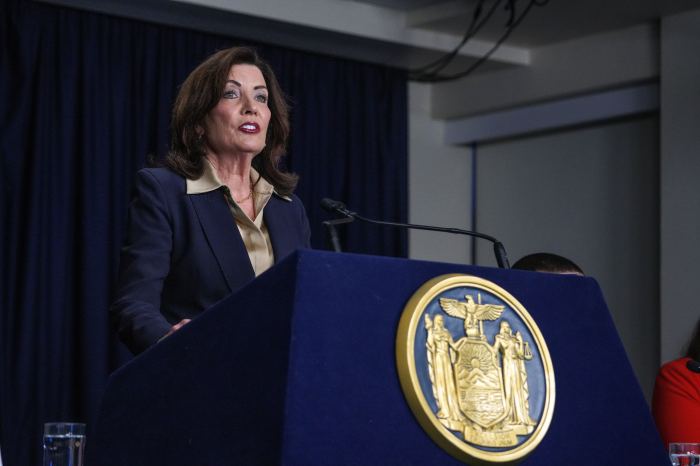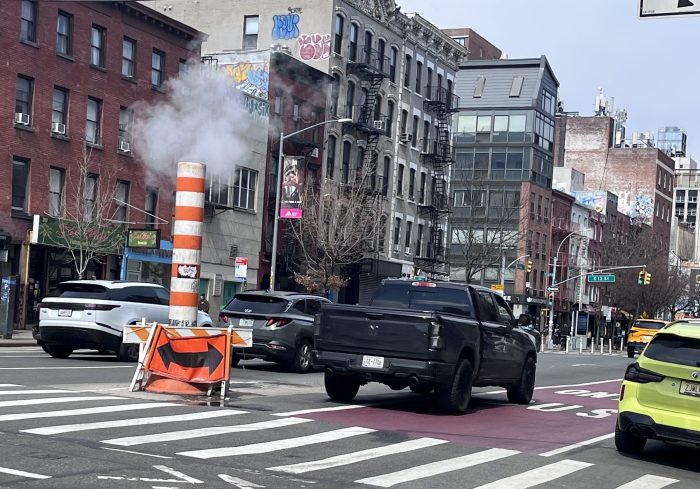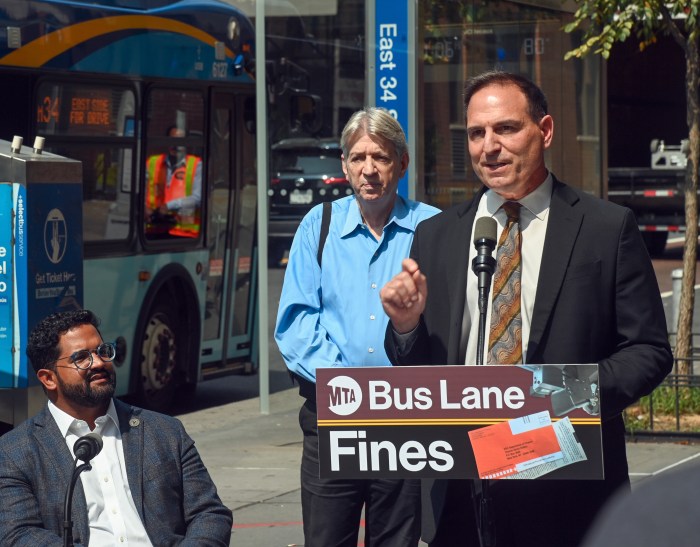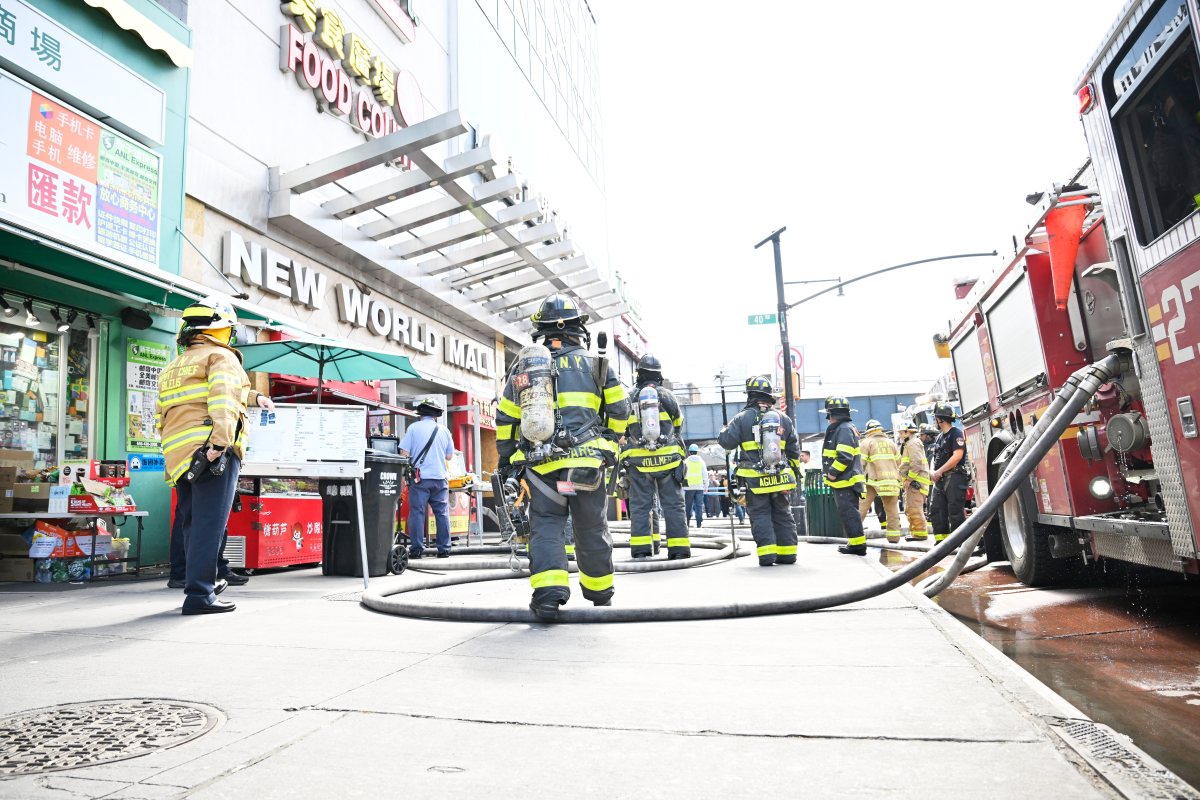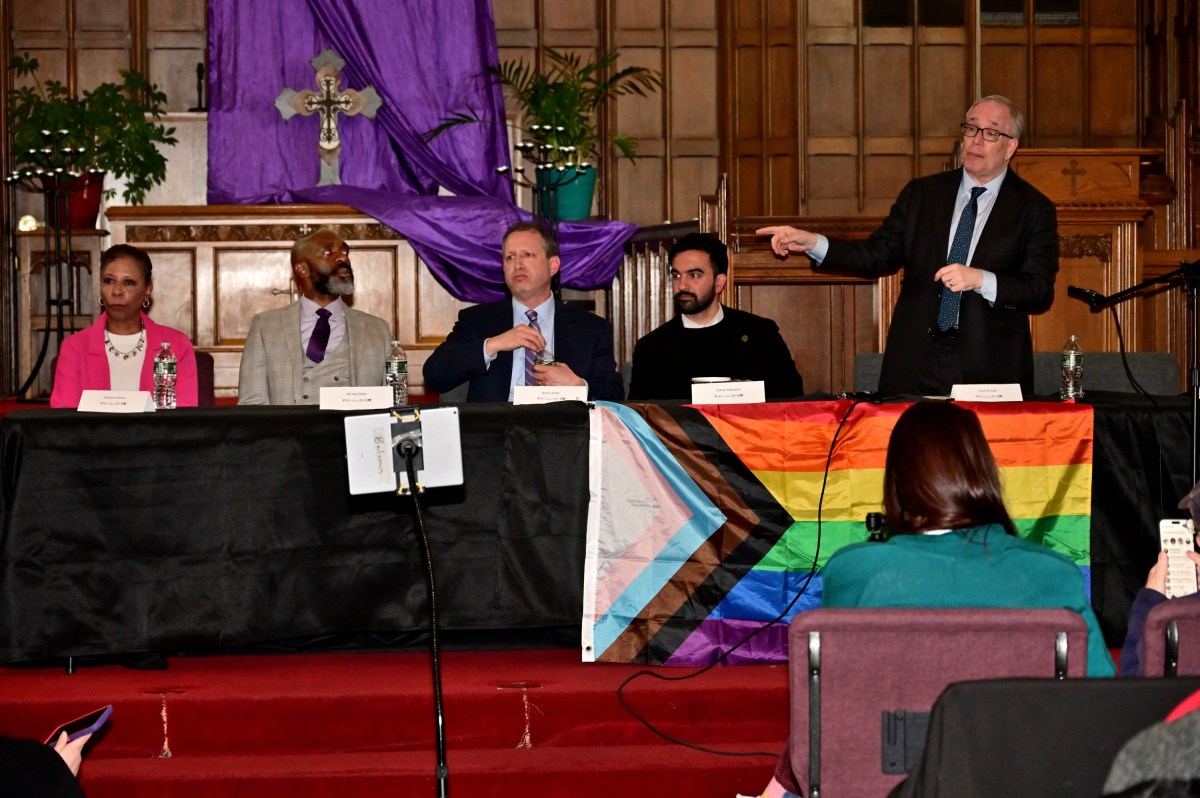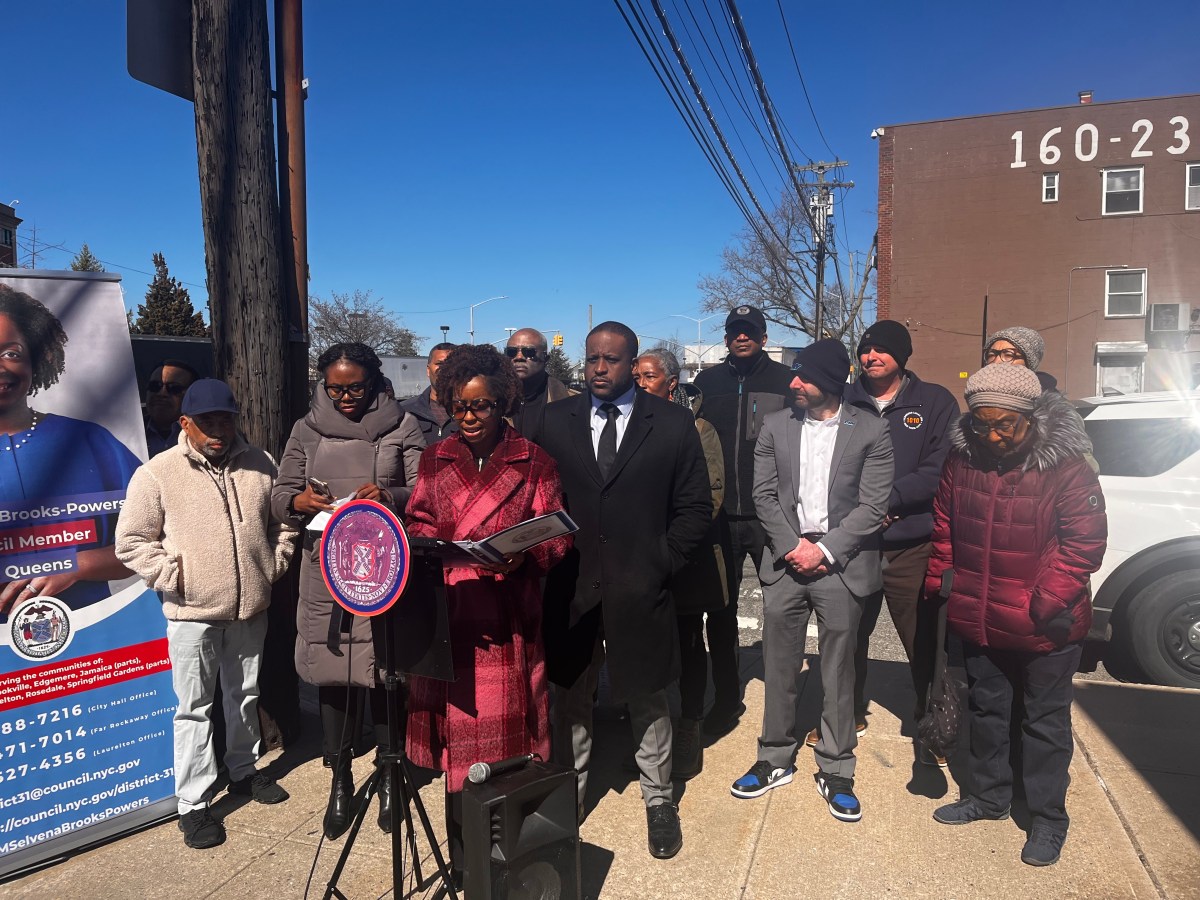
Despite an uptick in ticketing during Mayor Bill de Blasio’s placard crackdown, city-issued parking permit owners are still empowered to illegally park in dangerous ways throughout the city.
In St. George, Staten Island, police officers at the 120th Precinct and workers reporting to the wealth of municipal buildings and court offices park sedans and SUVs on busy sidewalks, in crosswalks, blocking fire hydrants and bus stops. Most often there are city-issued placards in their windshields. But on a recent morning, a handwritten note was enough to give a free pass to a sedan blocking a crosswalk at the corner of Richmond Terrace and Hamilton Avenue.
Alongside a stack of business cards for the 120 Precinct was a sheet of paper with “VEHICLE SQUAD” scrawled across it.
Edward Ortes and his wife, Vincenza, unwillingly run what is essentially a privately owned, free parking lot for those workers on the properties they own and manage, 140 and 160 Richmond Terrace. Over the years they’ve been harassed by the workers and ignored by the city as they’ve tried to keep placard-carrying drivers from parking on their property, they said. By the time the mayor announced a crackdown of such behavior last May, they had already given up. And nothing has changed since.
“We tried to correct it few times over the years — most are cops,” Ortes said. “Cops to cops, they won’t give tickets.”
But it’s more than just cops-to-cops. Other city and state workers take part. Drivers with non-city issued placards for Staten Island nonprofit Project Hospitality also get away with illegal parking. (The nonprofit did not return a request for comment explaining its placard protocol.)
There are about 160,000 city-issued parking permits in circulation. These are typically laminated placards with agency or user identification that are given to municipal workers or agencies, elected officials and certain commuters, such as those with disabilities, to allow the permittee to park within certain restricted zones.
Misuse of these placards has been widely reported for years in news outlets and through social media accounts like @placardabuse on Twitter. De Blasio’s administration, which announced its crackdown last spring after it conceded to handing out roughly 50,000 new placards to Department of Education teachers, pointed to an uptick in enforcement as a sign that a tide was turning away from a culture of misuse. In 2016, the city issued 28,269 summonses to drivers with placards who parked illegally. Last year, that number increased to 41,931 summonses.
“The city recognized placard abuse and misuse as a problem and stepped up to do something about it,” mayoral spokesman Austin Finan said in a statement. “Last year, NYPD issued over 13,000 more summonses for placard violations — an increase of nearly 50 [percent] from the previous year — and we’re focused on sustaining that heightened enforcement this year.”
De Blasio said at the time of his crackdown announcement that he would focus on “a parking permit that is issued legitimately but then used inappropriately and secondly, an illegitimate parking permit, one that’s not authentic.” The city’s efforts thus far seem to mostly be concerned with illegal placard parking, however, and not confiscating fraudulent placards. The city did not provide the number for confiscations of fake placards.
Safe street advocates say the lax enforcement allows for dangerous parking behavior in some of the city’s busiest areas like lower Manhattan and around schools, making children more vulnerable.
“Time and time again we’ve seen that a legitimate or even bogus placard are tantamount to a free parking pass and I think the perception may be that this is a victimless crime — a wink and a nod, or a courtesy that it’s just something you do to help people out,” said Paul Steely White, executive director of Transportation Alternatives. “But there are very real consequences to this rampant placard abuse. One is safety. We see placard vehicles parked in front of fire hydrants and in crosswalks, increasing the danger on our streets.”
That’s just one side of the issue. “Gridlock” Sam Schwartz, who had worked to curb the number of city-issued parking placards back in the 1980s as the city’s traffic commissioner, said the issue is also a very real contributor to traffic congestion, which is only worsening. Schwartz was a member of Gov. Andrew Cuomo’s congestion pricing panel, called Fix NYC, which called for an overhaul of the city’s placard program in its January report.
“If many of the placard holders park in truck loading zones and not in their designated spots, the truckers looking for space will of course double park. Everyone screams at the trucker, when it’s really not their fault for causing the traffic congestion,” Schwartz said.
Schwartz called the number of placards in rotation “ridiculous.” He believes the number of placards must be slashed by more than half and said the city could do so by limiting the number of placards for workers who must bounce around from site to site during a given shift.
“There are valid reasons for government employees to have placards, but commutation is not one of them,” he said. “Parking is not a right. Why doesn’t the waiter or the bodega owner get a placard? There are loads of working people in the city.”
A case in point could be Atlantic Avenue in Brooklyn, between Hoyt and Smith streets. It’s in the middle of one of the most transit-saturated areas of the city: almost a dozen subway lines run through Atlantic Terminal, as well as the Long Island Rail Road. But Department of Correction workers heading to the Brooklyn Detention Complex up the block use their placards to commute and park for free in what would be metered parking, infuriating the businesses looking for frequent turnover of parking.
Sara Nordmann, the executive director of the Atlantic Avenue BID, said for years that workers had used branded Correction and NYPD paraphernalia — like washcloths, hats or vests — as ersatz placards to park for free on the block, with officials doing little when she brought up the problem. Just after the crackdown was announced, she noted 33 of 46 cars parked on the block between Hoyt and Smith streets used some form of work gear in lieu of placards.
Unions representing city correction workers and police officers — the Correction Officers’ Benevolent Association and the Patrolmen’s Benevolent Association — did not respond to requests for comment.
A similar rationale persisted through the summer, she said, but when she requested City Comptroller Scott Stringer investigate lost revenue from the abuse, their office declined.
“The issue has gotten slightly better since then, but it’s mostly transmuted to other forms of abuse,” she said. “Once people realized they’re giving out some tickets, then it seems they just switched to any other placard they could find, ones that don’t list expiration date or aren’t assigned to a vehicle or very clearly fake. The fundamental issue behind everything is it seems it is the culture of supporting or encouraging these workers to drive in such a transit-rich area.”
